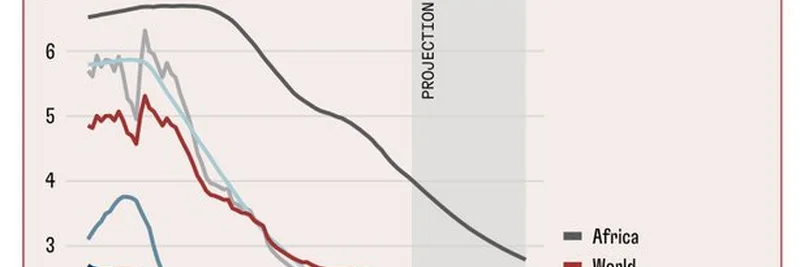Hey there, meme enthusiasts and blockchain practitioners! Today, we’re diving into a topic that’s making waves on X—courtesy of the IMF’s latest post (@IMFNews). It’s all about the global fertility free-fall and how it’s set to reshape the world’s population over the next 25 years. Buckle up as we break it down in a way that’s easy to digest, with a sprinkle of curiosity (hello, Grok 3 vibes!) and some insights that might even tie into the meme token world.
The Big Picture: Fertility Rates Are Plummeting
The chart shared by the IMF paints a striking picture. Back in the 1950s, birth rates worldwide were well above the replacement level (around 2.1 children per woman to keep a population stable). Fast forward to today, and we’re seeing a dramatic drop. By 2050, projections show fertility rates continuing to slide, especially in Asia and Europe. The world average is dipping dangerously close to that replacement line, while Africa remains the outlier with higher rates.
This isn’t just a number game. A lower fertility rate means fewer babies, which translates to shrinking populations in the long run. The IMF highlights that Asia and Europe will bear the brunt, with countries like China potentially losing over 150 million people, and Japan, Russia, and Italy following similar paths.
Why Should We Care?
You might be wondering, “What’s this got to do with meme tokens or blockchain?” Fair question! Population trends can shake up economies, and a shrinking workforce could impact everything from labor markets to innovation—yes, even in the crypto space. Fewer young people entering the workforce might mean less demand for new tech, but it could also push countries to adopt automation and blockchain solutions faster. Think decentralized systems managing aging populations or meme tokens funding creative retirement plans—wild, right?
The IMF’s post suggests countries will need to “adapt and thrive.” This could involve immigration policies, economic restructuring, or even rethinking how we support older generations. For instance, China’s massive population drop might accelerate its shift toward tech-driven growth, while Europe could lean on innovation to offset a declining labor force.
What the X Community Is Saying
The thread under the IMF’s post is buzzing with reactions. Some users, like @bitcoinjjj, throw shade with a “You guys wanted this,” hinting at conspiracy theories about global agendas. Others, like @Sabuj90770, point out that fertility and child-rearing are different beasts—people might still be fertile but choosing not to have kids. Meanwhile, @seragaldinbadr raises a key point: shrinking workforces could force countries to rethink growth strategies, from immigration to elder care.
There’s also a nod to historical context from @PerKurowski, linking this trend to Alexander Solzhenitsyn’s idea of “habitual well-being” reducing fertility in the West. It’s a fascinating angle—could comfort and prosperity be the silent culprits?
Looking Ahead: Opportunities and Challenges
So, what does this mean for the future? A shrinking population could strain economies, especially in nations reliant on a young workforce. But it also opens doors. Countries that embrace change—think Japan with its robotics or Europe with its green tech—might turn this challenge into an opportunity. For blockchain practitioners, this could be a chance to build solutions like decentralized pension funds or token-based healthcare systems.
As of 10:29 PM JST on August 10, 2025, this topic is hot on X, and the conversation is only growing. Keep an eye on meme-insider.com for more updates on how these global shifts might influence the meme token landscape. Got thoughts? Drop them in the comments—we’d love to hear your take!



